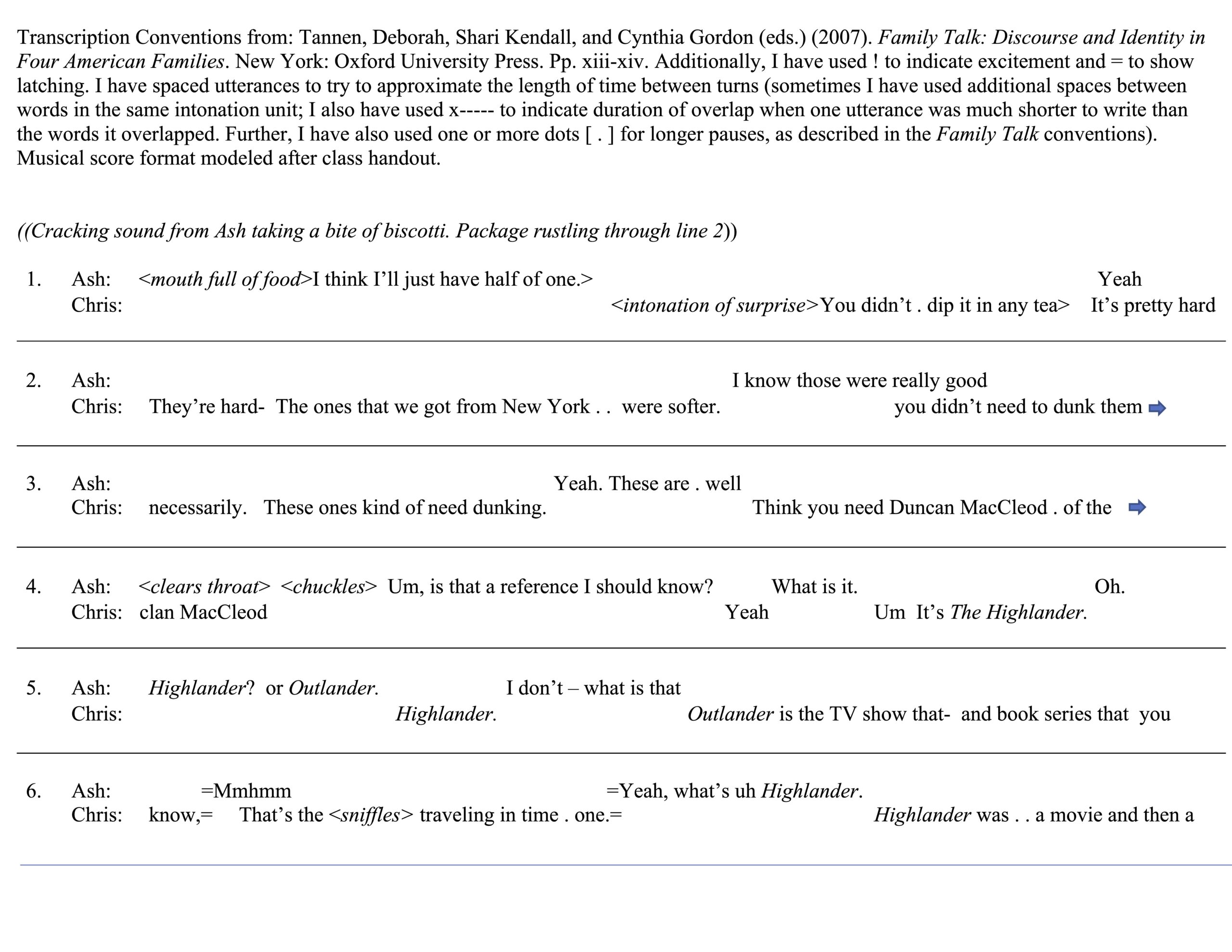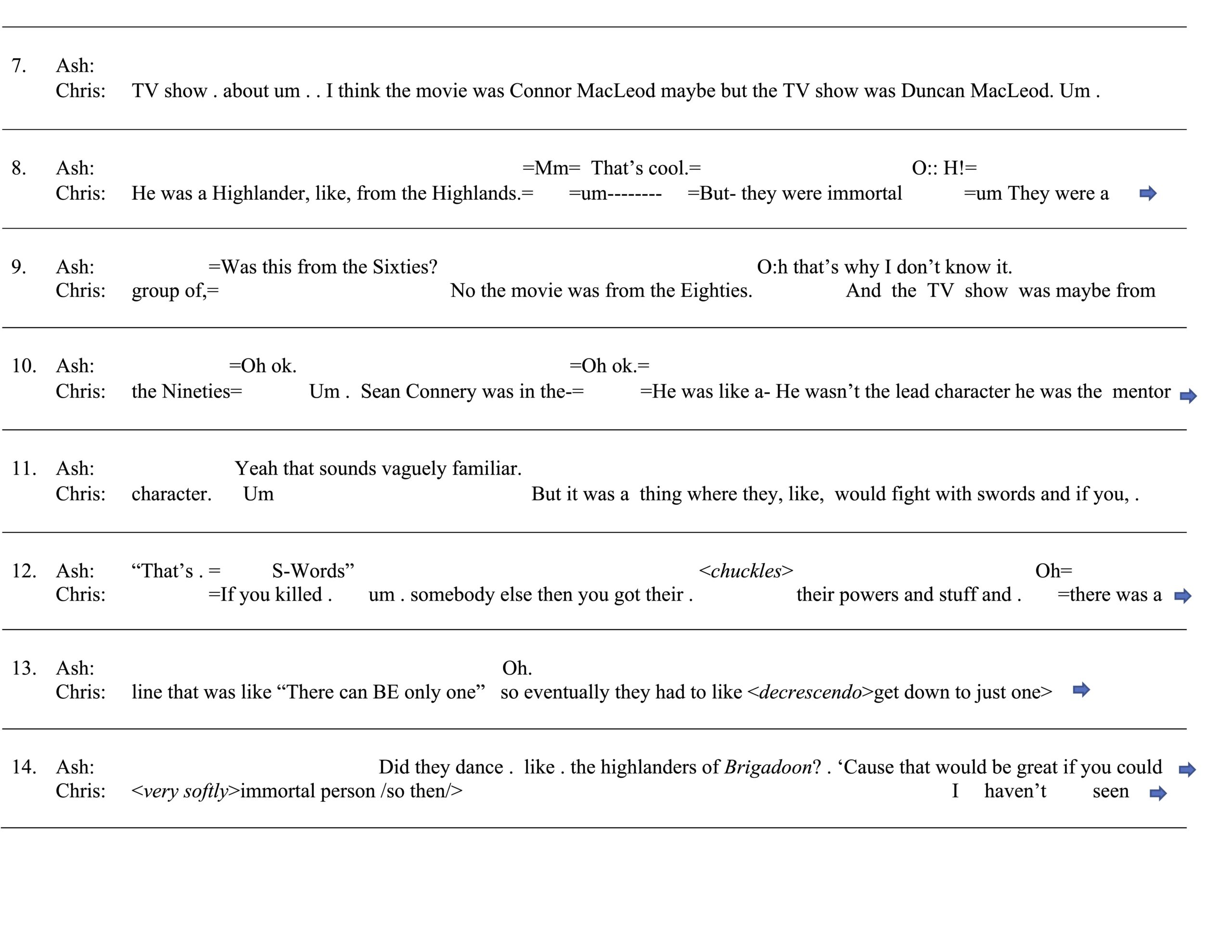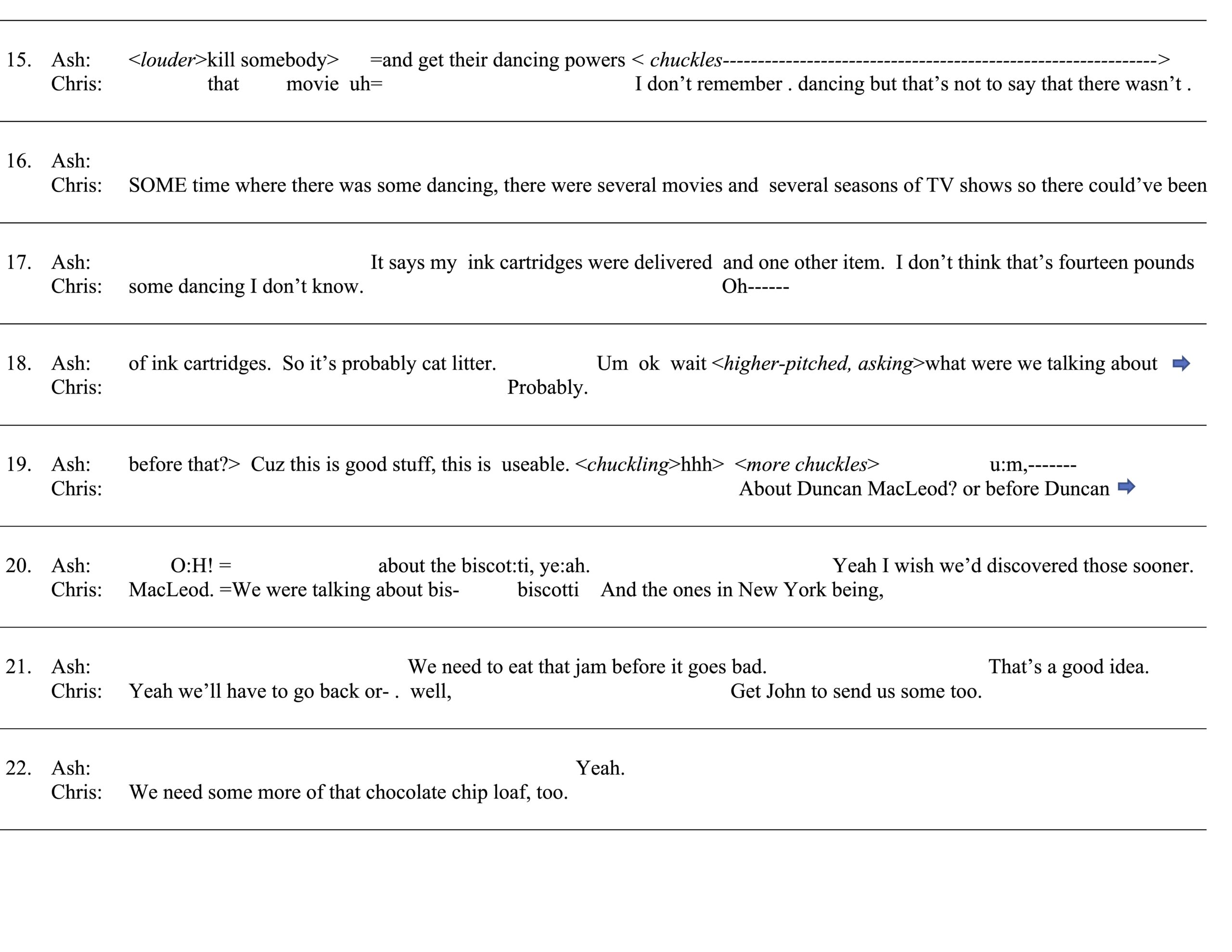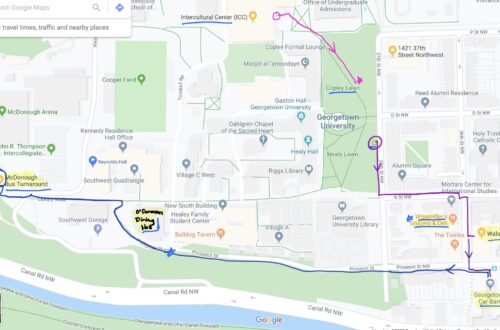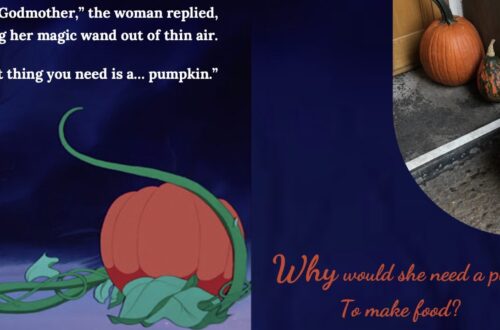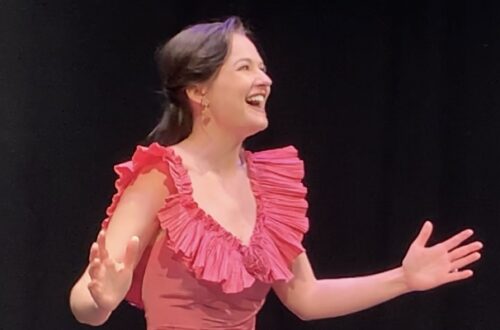Biscotti/Highlander Transcription
Georgetown University, 2020. Linguistics. Discourse Analysis: Conversation.
[The recording and transcriptions below correspond with several short papers shared on my site. I’ve also provided commentary related to the transcription process itself, as I worked with three ways types of formatting: play script, column, and quasi-musical score.]
Conversation Excerpt:
Play Script Transcription
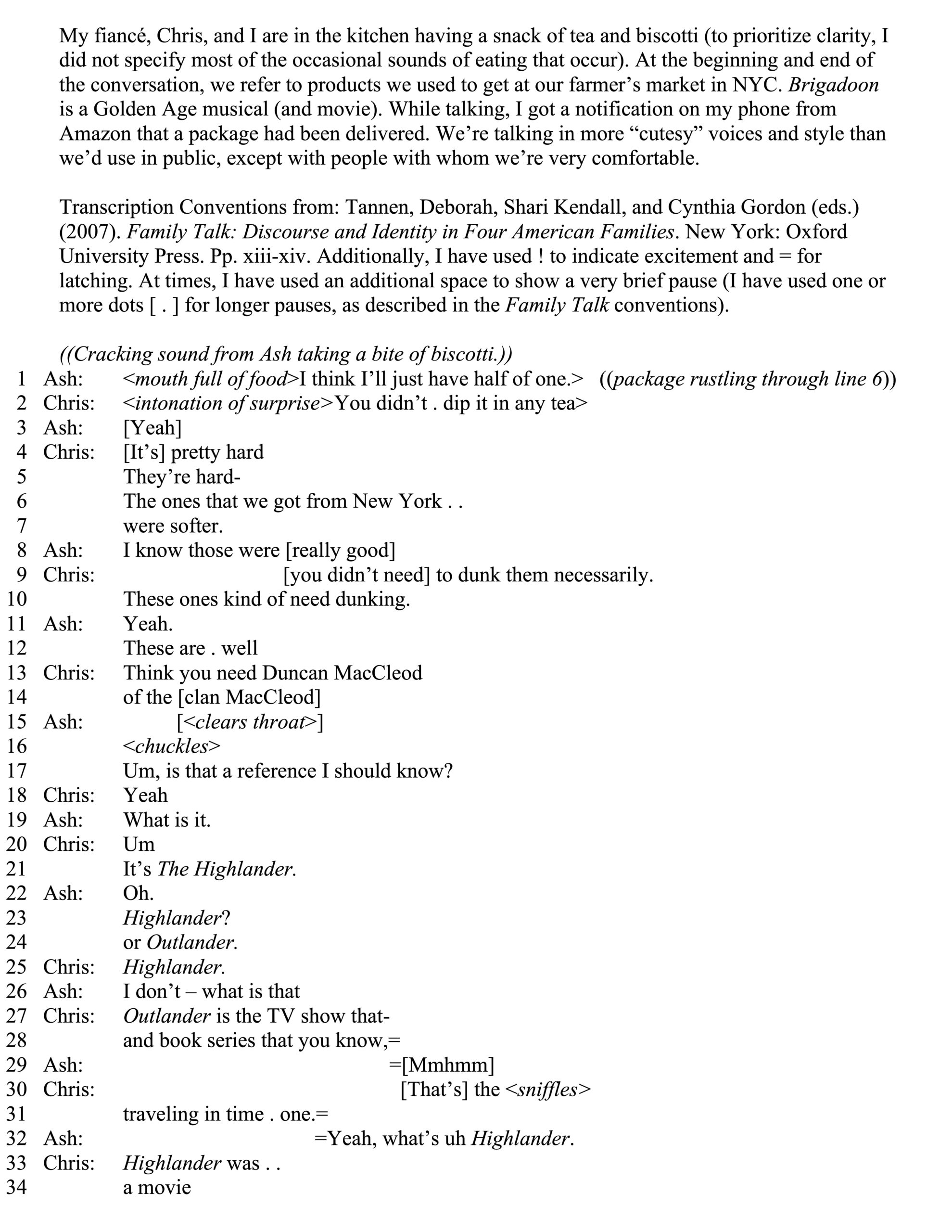
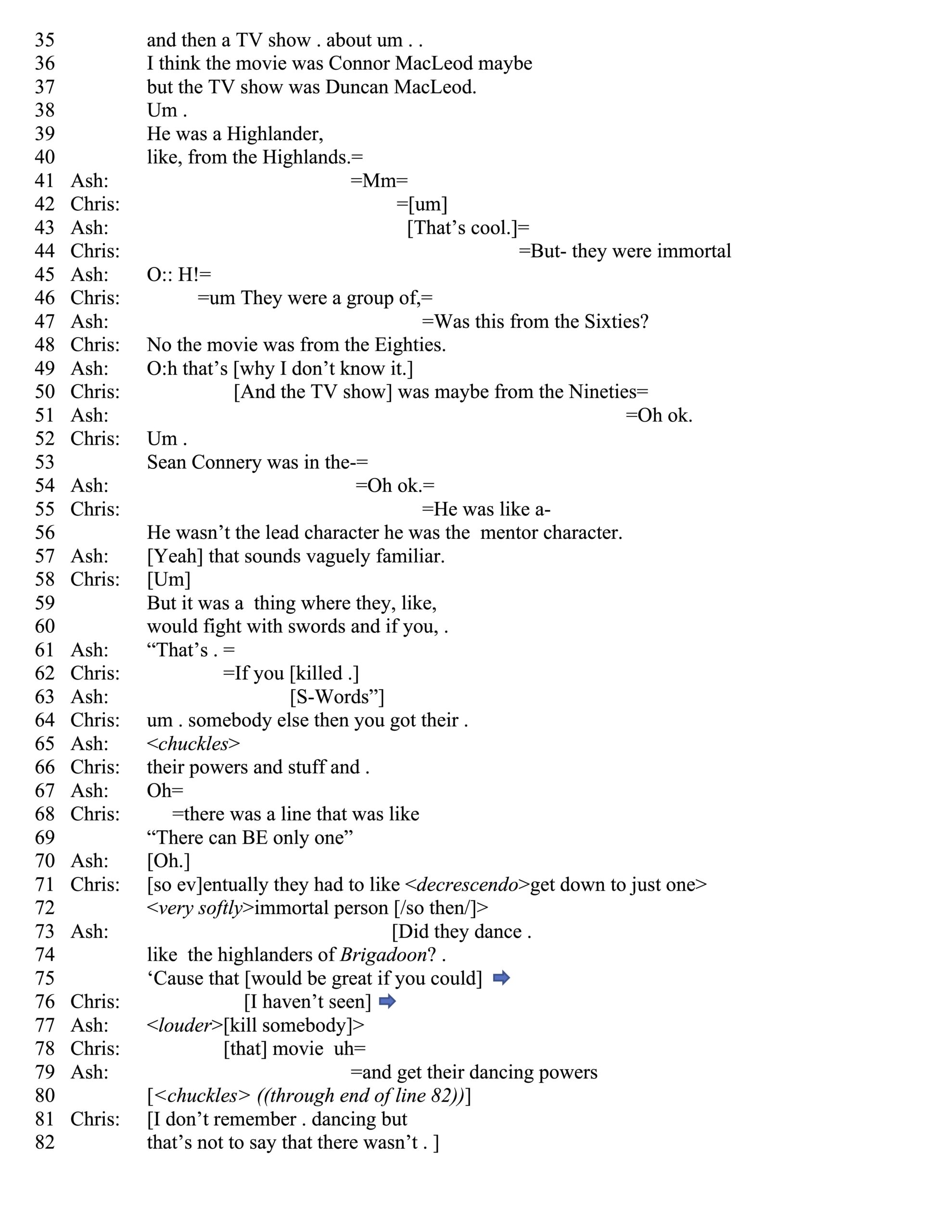
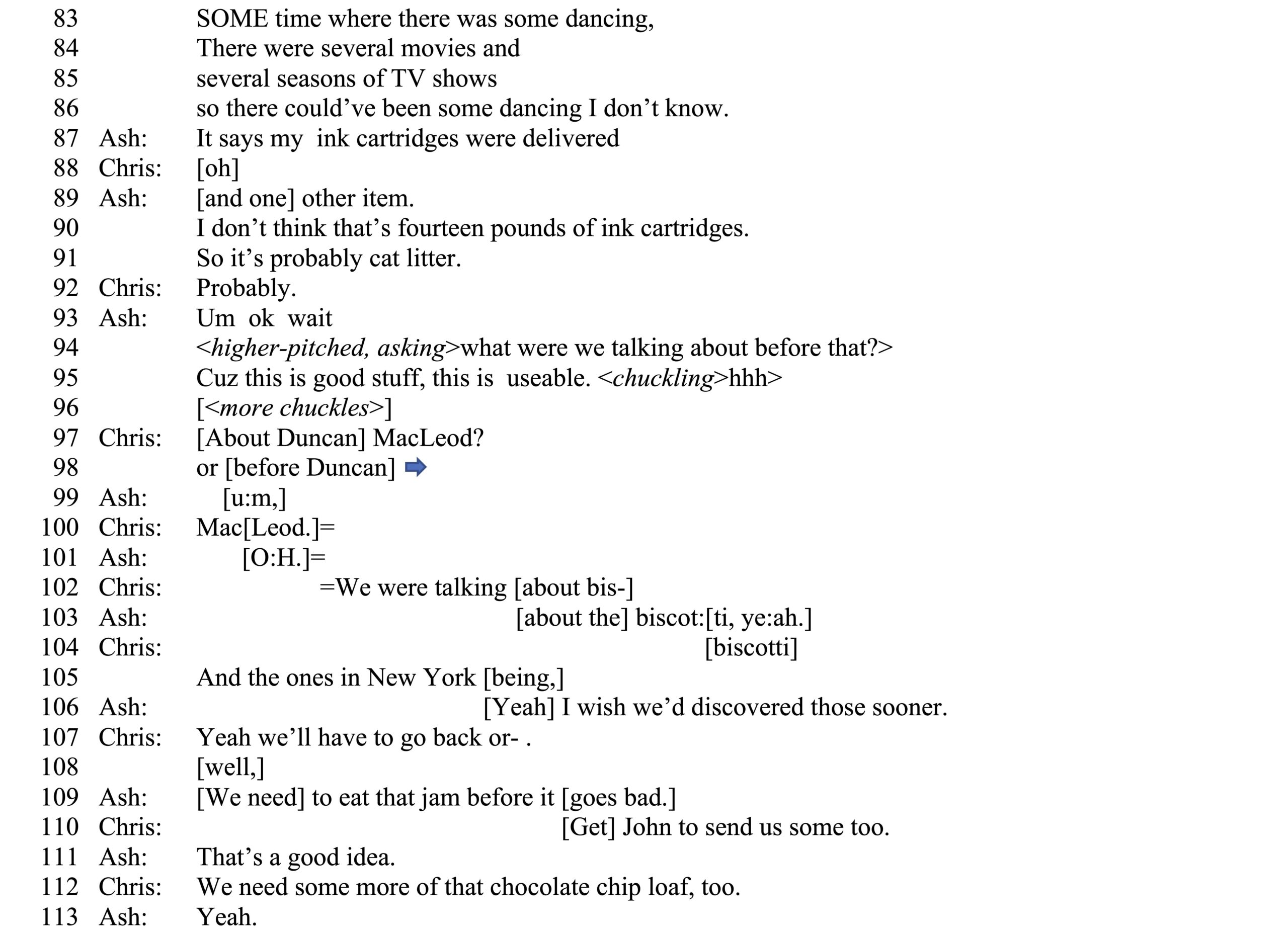
This was my debut transcribing an excerpt of this length, genre (natural speech), and with myself as a participant. Though I could relate to much of what Bucholtz (2007) and Ochs (1979) described, it was primarily from a conceptual standpoint, rather than that of an active practitioner. I found it both fun and challenging; at times, it was difficult to hear everything that was occurring (particularly in instances of overlap and latching) and then to select what and how to represent our utterances. I gleaned much from our workshop feedback. Though I indicated a few instances of pitch, intonation, or intensity variation, this is the area of my transcription that I feel is most lacking; I would like to capture more without adding obscuring clutter.
Column format: Ochs’ discussion of left to right biases made me consider my column orientation. Ultimately, I kept my speech on the left because my turn introduced this topic in our conversation. I encountered some questions I did not think to ask in class, mainly regarding overlap. The model in the instructions retained brackets; the longer passage from your presentation did not. Because of how the spacing looked with only two participants, I decided to use brackets; also, when overlap began during a line, rather than at the beginning, I indented to indicate this). I found this format a little harder visually to work with for my current data.
The musical score format was very useful, as my data exhibits many instances of overlap and latching. For latching, I forgot to ask whether we should use =. I chose to; it seemed clearer than indicating through spacing alone. I would like to experiment further with analyzing some portions blocked rhythmically (as Frederick Erickson has done). There are instances where I persist with my jokes while Chris persists with his story that are timed very interestingly. Line 16 of that format also shows an example of Chris speaking pretty quickly (for him), which I’d like to examine. Given the differences in our typical paces (I often have to remind myself to slow down when it comes to his turn-taking pauses, which can be excruciatingly long for me), I sometimes found it hard to show overlap for bits where I was using several words while he was concurrently using one or two (e.g., lines 14-15; I also cram the rest of my content in during his pauses).
Though somewhat time consuming, it was useful to notice what each format highlighted, and I feel I have a better understanding of how I could use format and conventions to illustrate a particular focus of research – I just want to keep in mind the cautions Bucholtz raised when doing so.
References
Bucholtz, M. (2007). Variation in Transcription. Discourse Studies 9(6), 784-808.
Ochs, E. (1979). Transcription as theory. In E. Ochs and b. Schieffelin (eds.), Developmental Pragmatics. (pp. 43-72). New York: Academic Press.s
Columns Transcription
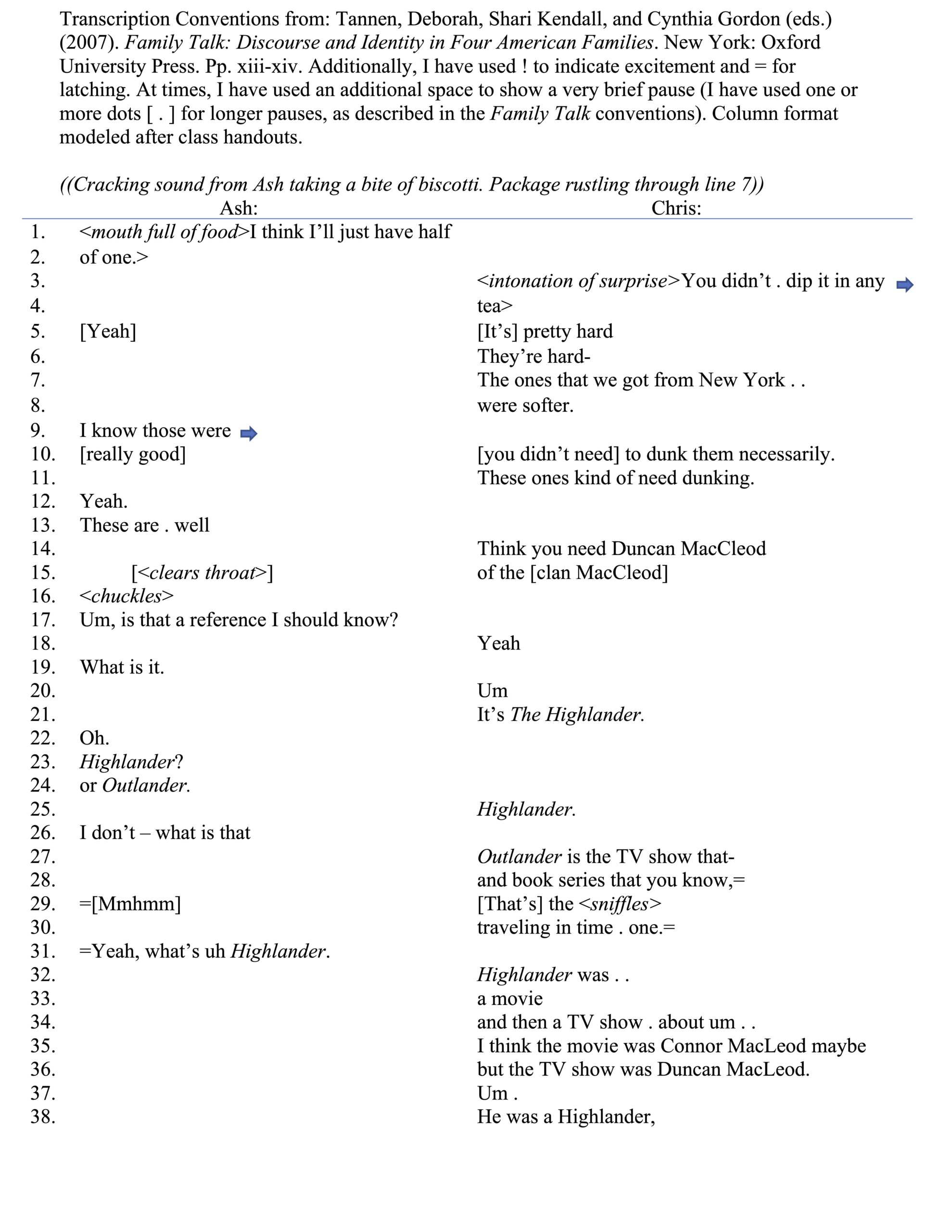
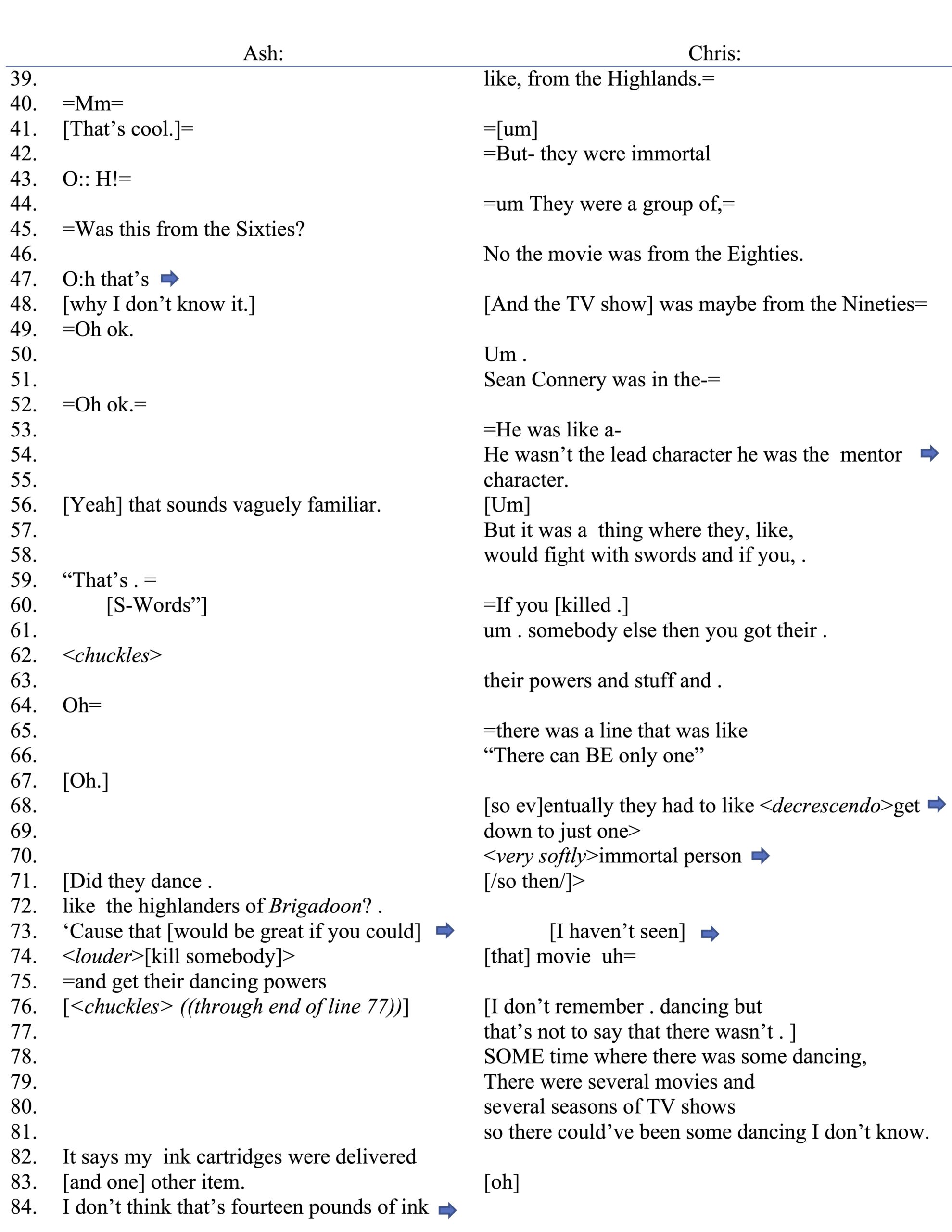
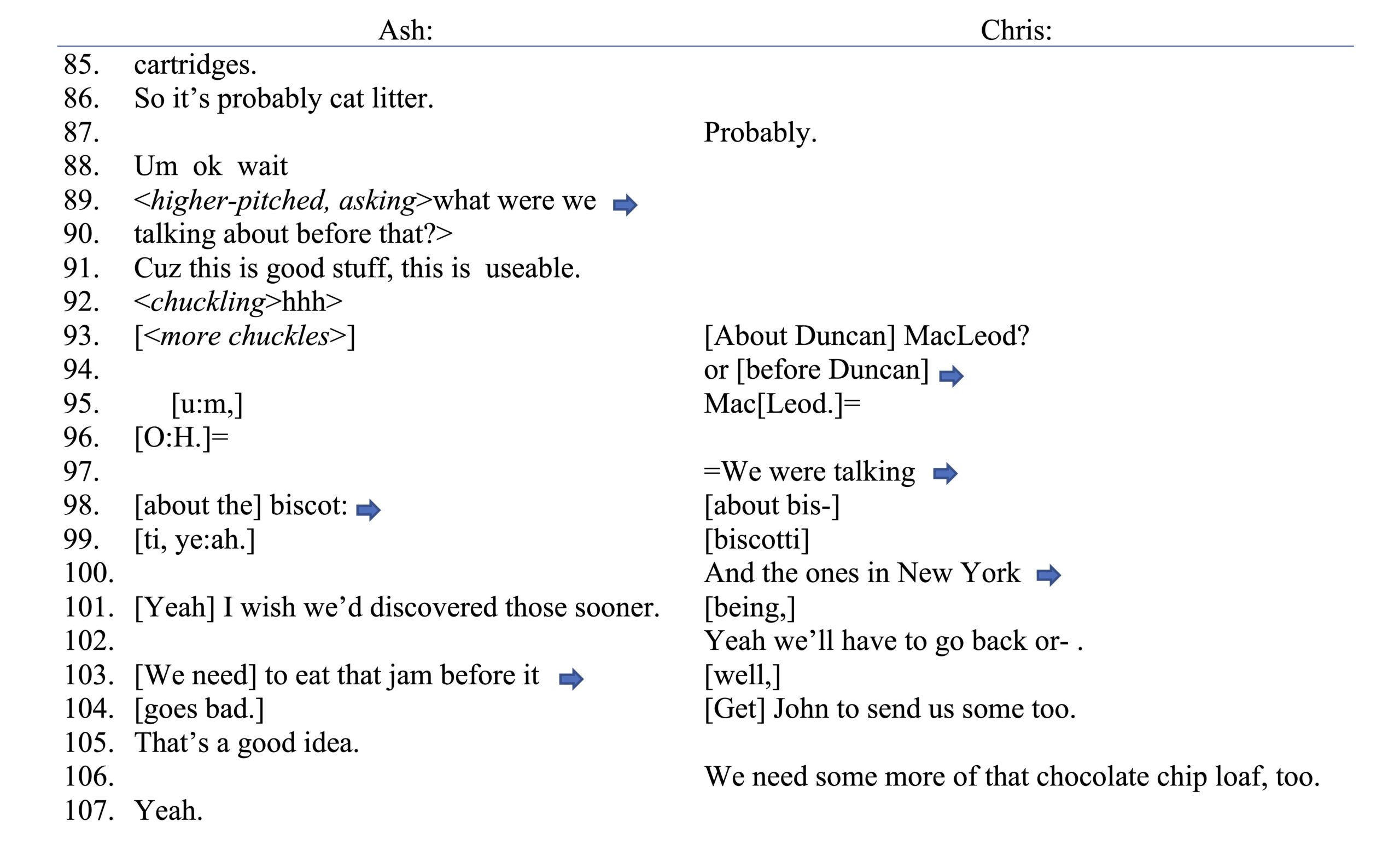
Quasi-Musical Score Transcription
